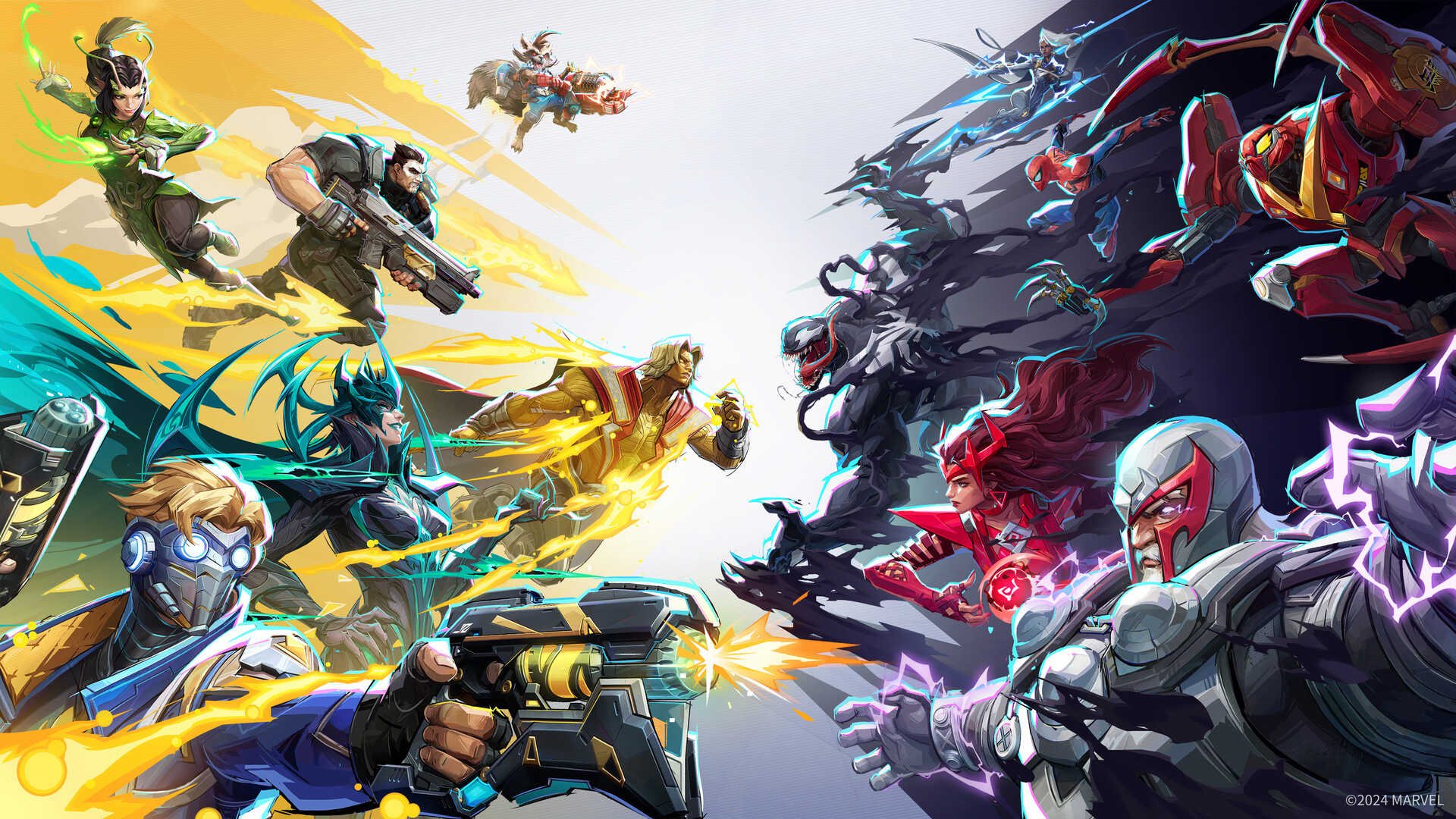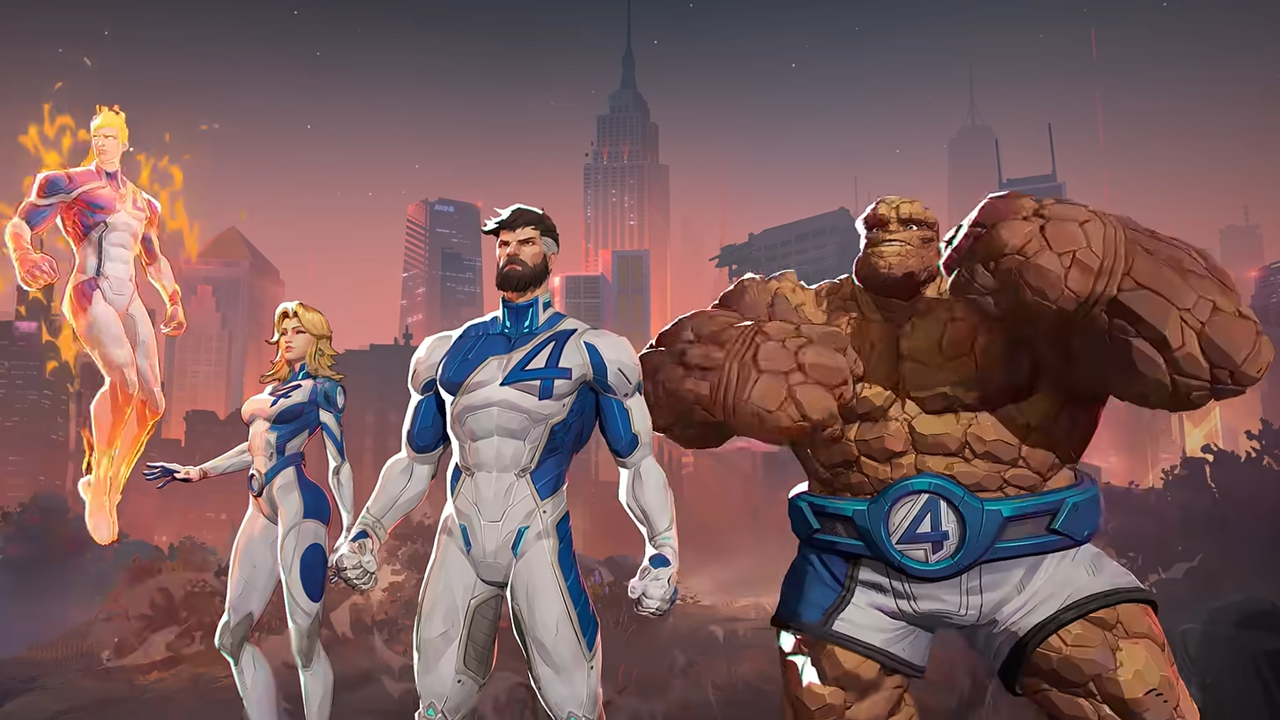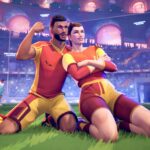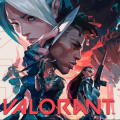Popular Now
Introduction
Marvel Rivals, the highly anticipated team-based hero shooter developed by NetEase in collaboration with Marvel Games, launched into its early access phase with immense hype. Featuring iconic characters from across the Marvel multiverse, stunning visuals, and Overwatch-style 6v6 action, it quickly gained attention from fans and critics alike. However, amidst the excitement lies a critical issue that could undermine its competitive potential: imbalanced character power dynamics.
Balancing a hero shooter is a notoriously difficult task, especially when each character brings unique abilities, roles, and lore-driven expectations. In Marvel Rivals, the stakes are even higher. Players expect their favorite superheroes—whether it's Iron Man, Storm, or Scarlet Witch—to feel powerful, but also fair in a competitive environment. Yet, as gameplay data and community feedback begin to surface, it's clear that some heroes dominate while others languish, threatening both player satisfaction and game longevity.
This article delves deep into Marvel Rivals’ character balancing problems—tracing their origins, analyzing their impact on gameplay and community, and exploring how NetEase can correct course before the imbalance becomes irreversible.
1. The Weight of Legacy: Balancing Superheroes with Fan Expectations
One of the biggest challenges in Marvel Rivals is reconciling gameplay fairness with superhero lore. Characters like Hulk or Doctor Strange are canonically among the most powerful beings in the Marvel universe. Players expect these characters to dominate in combat—but that expectation clashes with the need for mechanical balance.
This creates a design dilemma:
-
If Hulk is nerfed to match the DPS of Rocket Raccoon, fans feel he's underpowered.
-
If Hulk reflects his in-universe power, he breaks the game’s competitive fairness.
Marvel Rivals tries to resolve this with role-based design (Tank, Damage, Support), but the thematic baggage each character carries still influences player expectations. It becomes harder to balance not just mechanics, but also emotional attachment to characters.

2. Early Meta: Who Dominates and Who Gets Left Behind
As with any new competitive game, an early meta has emerged in Marvel Rivals. Through closed alpha tests and early access play, clear frontrunners have been identified. Currently:
-
Scarlet Witch, with her area denial and crowd control, is often considered overpowered.
-
Iron Man has a versatile kit that allows him to excel in both offense and defense.
-
Loki’s stealth and burst combo make him devastating in disorganized teams.
Conversely, characters like Magik and Peni Parker have been criticized for low survivability, high skill requirements, and unclear team value.
This early imbalance is particularly dangerous. If certain characters dominate the meta, casual and competitive players gravitate toward them, leading to stale team compositions and neglected heroes. That, in turn, affects matchmaking and player diversity.
3. Role Imbalance: Tanks vs. Damage vs. Support
Marvel Rivals, like Overwatch, assigns characters to roles. However, unlike Overwatch’s rigid role queue, Rivals allows more fluid role selections, which exacerbates imbalance issues.
Currently:
-
Damage heroes vastly outnumber viable Support characters.
-
Tank characters often lack the mobility and utility needed to justify their slower playstyle.
-
Teams with multiple high-damage picks (e.g., Storm, Scarlet Witch, Iron Man) tend to steamroll balanced compositions.
This causes Support players to feel underappreciated and Tank players to feel like bullet sponges. Without meaningful role parity, matches become deathmatch-heavy and teamplay suffers.
4. Ability Kit Complexity and Learning Curve
Another problem tied to balance is the complexity of hero kits. Some characters, like Rocket Raccoon, require intricate positioning, trap usage, and prediction. Others, like Hulk, are far more straightforward—smash and leap.
This disparity leads to:
-
Low-skill floor, high-impact heroes dominating lower-ranked play
-
High-skill heroes underperforming until mastered
The net result is a perception that simpler heroes are overpowered, even if their stats are technically balanced. Players choosing mechanically demanding heroes may feel punished for investing effort if easier picks achieve better results with less input.
5. Cooldowns and Ultimate Power Disparity
Ultimate abilities are a core part of Marvel Rivals’ identity, offering spectacular, game-changing moments. However, cooldown disparity and ultimate imbalance are significant issues.
For example:
-
Scarlet Witch's chaos storm can control an entire objective zone, yet has a moderate cooldown.
-
Hela’s resurrection ability is game-breaking in overtime rounds.
-
Meanwhile, Rocket Raccoon's turret upgrade often feels underwhelming for an ultimate ability.
This inconsistency creates “ultimate inflation” where some heroes swing fights with one press while others barely impact engagements. Proper tuning of cooldowns and impact is essential for fair teamfights.

6. Map Design and Environmental Synergies
Map design plays a pivotal role in hero performance. Certain maps in Marvel Rivals favor vertical mobility and ranged attacks, creating an environmental bias toward characters like Storm, Iron Man, or Spider-Man.
Maps with:
-
High vantage points and vertical flanking routes
-
Open lanes with little cover
-
Few choke points for Tanks to exploit
...effectively nerf melee-based or low-mobility heroes, making them obsolete on certain maps. This map imbalance introduces yet another layer of inconsistency, where a hero’s effectiveness isn’t just kit-dependent, but map-dependent.
7. Lack of In-Game Counter Systems
One of the hallmarks of good hero shooter balance is clear counterplay. In Marvel Rivals, counter systems are underdeveloped. While certain heroes have natural counters (e.g., Spider-Man vs. heavy Tanks), the game lacks:
-
In-game tutorials or hints about effective counters
-
Visual clarity in recognizing enemy abilities
-
Cooldown indicators for tracking threats
As a result, players feel helpless against overpowered combos. For instance, Loki’s stealth followed by burst kill has few reactive options unless players already know how to counter him. This lack of counterplay clarity makes strong heroes feel even stronger.
8. Community Feedback and NetEase’s Response
The Marvel Rivals community has been vocal about balance issues, especially during alpha and early access stages. Reddit threads, Discord discussions, and YouTube feedback all highlight:
-
The dominance of specific meta picks
-
The absence of patch transparency
-
Concerns that fan-favorite characters are weaker to promote diversity
To NetEase’s credit, some patch notes have addressed hero tuning. However, communication remains limited, and hotfixes feel sporadic. Players crave a consistent roadmap for balance updates and a stronger sense that developers are listening.
9. The Competitive Implications of Imbalance
As Marvel Rivals inches toward becoming an esports contender, balance becomes more crucial. Tournaments, ranked ladders, and organized play rely on:
-
Predictable character behavior
-
Role viability across all skill tiers
-
No “must-pick” heroes that invalidate strategy
If imbalance persists:
-
Pro players will lock into a small hero pool
-
Spectator experience will suffer due to mirror matches
-
Casual players will avoid competitive modes altogether
The long-term success of Marvel Rivals in the esports scene hinges on balance clarity and fairness at all levels of play.
10. Paths Forward: How Marvel Rivals Can Fix Its Balance Issues
Despite these challenges, there’s hope. NetEase can draw from lessons learned by Overwatch, Valorant, and Apex Legends. Solutions include:
Short-Term Fixes:
-
Implement weekly or biweekly balance patches
-
Provide detailed patch notes and balance philosophy
-
Host community Q&A sessions with designers
Long-Term Strategies:
-
Introduce a hero pick-ban system in ranked or tournament modes
-
Add adaptive matchmaking based on hero performance
-
Create hero tutorials highlighting counters and synergies
-
Balance map pool rotations to ensure all heroes have viable environments
Balance isn't about making every hero equal—it’s about ensuring every hero has a fair opportunity to shine, in the right context, with the right team synergy.
Conclusion
Marvel Rivals is a visually stunning, ambitious hero shooter that taps into the power and appeal of the Marvel universe. But beneath its flashy exterior lies a precarious balancing act. The gap between overperforming heroes and underwhelming ones threatens the integrity of gameplay, competitive potential, and long-term engagement.
If NetEase is to ensure that Marvel Rivals isn’t just a brief spark in the live-service space, but a lasting force, then addressing character imbalance must be their top priority. With transparent updates, refined hero kits, and community collaboration, they can create a battlefield where all heroes—no matter how big or small—have their rightful place.

















